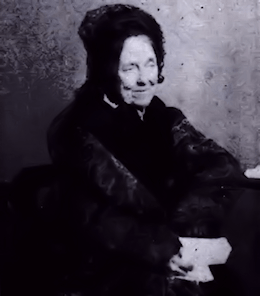Textus Receptus Bibles
Julia E. Smith Translation 1876
| 6:1 | Where went thy beloved, O beautiful one among women? where turned away thy beloved, and we will seek him with thee. |
| 6:2 | My beloved went down to his garden, to the beds of spices, to feed in the gardens, and to gather lilies. |
| 6:3 | I to my beloved, and my beloved to me: he feeding among the lilies. |
| 6:4 | Thou art beautiful my friend, as delight; becoming as Jerusalem, a terror as those being furnished with banners. |
| 6:5 | Turn away thine eyes from before me; they enlarged me: thy hair as a herd of goats which lay down from Gilead. |
| 6:6 | Thy teeth as a herd of sheep which went up from the washing, all of them bearing twins, and none barren among them. |
| 6:7 | As a piece of pomegranate thy temples from behind thy veil. |
| 6:8 | They are sixty queens, and eighty concubines, and maidens no number. |
| 6:9 | She is one, my dove, my perfect one; she is one to her mother, she is the chosen to her bearing her. The daughters saw her and pronounced her happy; the queens and the concubines, and they will praise her. |
| 6:10 | Who this looking forth as the morning, beautiful as the moon, clear as the sun, a terror as those being furnished with banners? |
| 6:11 | I went down into the garden of nuts to look upon the greens of the valley, to see whether the vine was fruitful, whether the pomegranates blossomed. |
| 6:12 | I knew not my soul set me the chariots of my willing people. |
| 6:13 | Turn back, turn back, thou Shulamite; turn back, turn back, and we will look upon thee. What will ye see in the Shulamite? As the stringed instrument of the camps. |

Julia E. Smith Translation 1876
The Julia Evelina Smith Parker Translation is considered the first complete translation of the Bible into English by a woman. The Bible was titled The Holy Bible: Containing the Old and New Testaments; Translated Literally from the Original Tongues, and was published in 1876.
Julia Smith, of Glastonbury, Connecticut had a working knowledge of Latin, Greek and Hebrew. Her father had been a Congregationalist minister before he became a lawyer. Having read the Bible in its original languages, she set about creating her own translation, which she completed in 1855, after a number of drafts. The work is a strictly literal rendering, always translating a Greek or Hebrew word with the same word wherever possible. Smith accomplished this work on her own in the span of eight years (1847 to 1855). She had sought out no help in the venture, even writing, "I do not see that anybody can know more about it than I do." Smith's insistence on complete literalness, plus an effort to translate each original word with the same English word, combined with an odd notion of Hebrew tenses (often translating the Hebrew imperfect tense with the English future) results in a translation that is mechanical and often nonsensical. However, such a translation if overly literal might be valuable to consult in checking the meaning of some individual verse. One notable feature of this translation was the prominent use of the Divine Name, Jehovah, throughout the Old Testament of this Bible version.
In 1876, at 84 years of age some 21 years after completing her work, she finally sought publication. The publication costs ($4,000) were personally funded by Julia and her sister Abby Smith. The 1,000 copies printed were offered for $2.50 each, but her household auction in 1884 sold about 50 remaining copies.
The translation fell into obscurity as it was for the most part too literal and lacked any flow. For example, Jer. 22:23 was given as follows: "Thou dwelling in Lebanon, building as nest in the cedars, how being compassionated in pangs coming to thee the pain as in her bringing forth." However, the translation was the only Contemporary English translation out of the original languages available to English readers until the publication of The British Revised Version in 1881-1894.(The New testament was published in 1881, the Old in 1884, and the Apocrypha in 1894.) This makes it an invaluable Bible for its period.